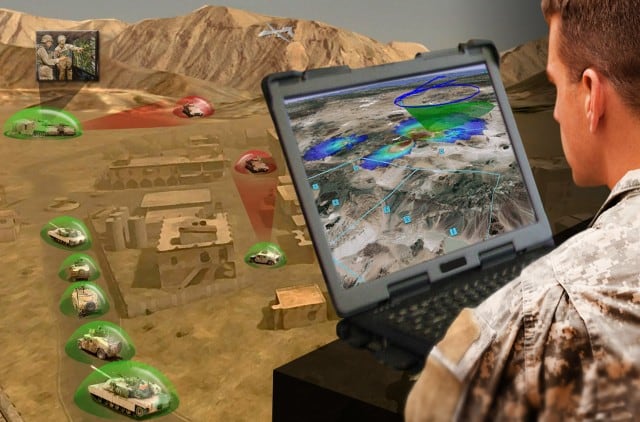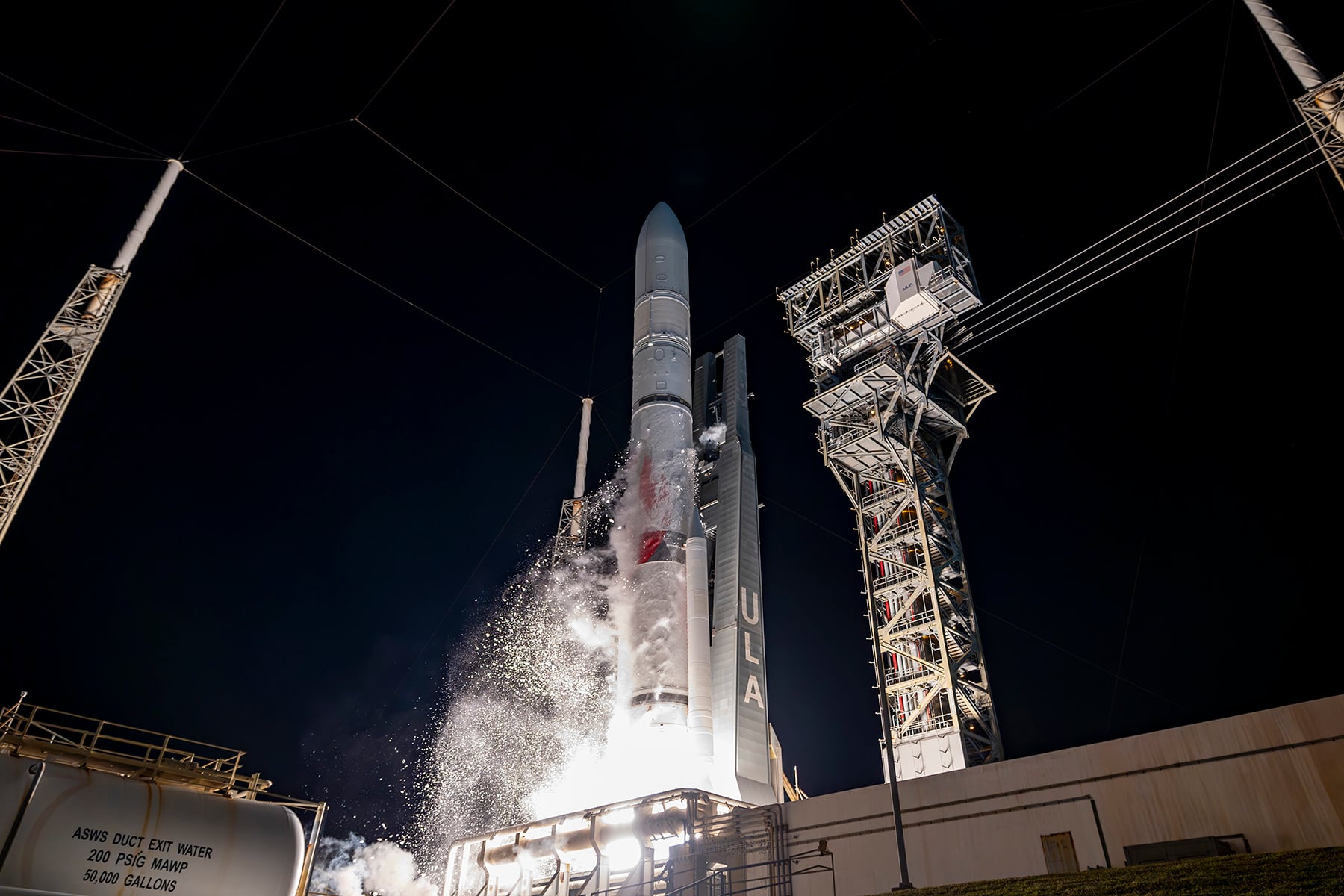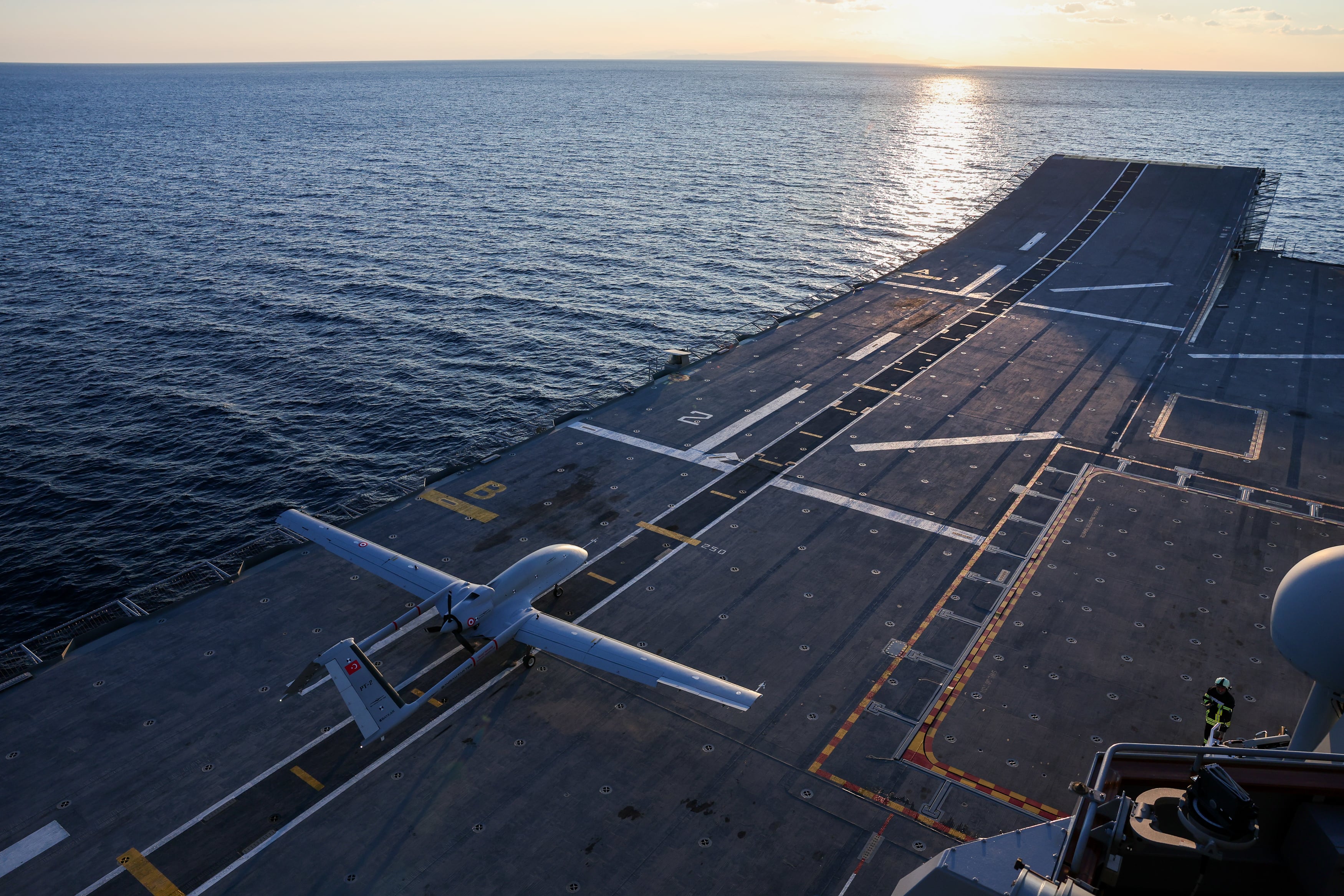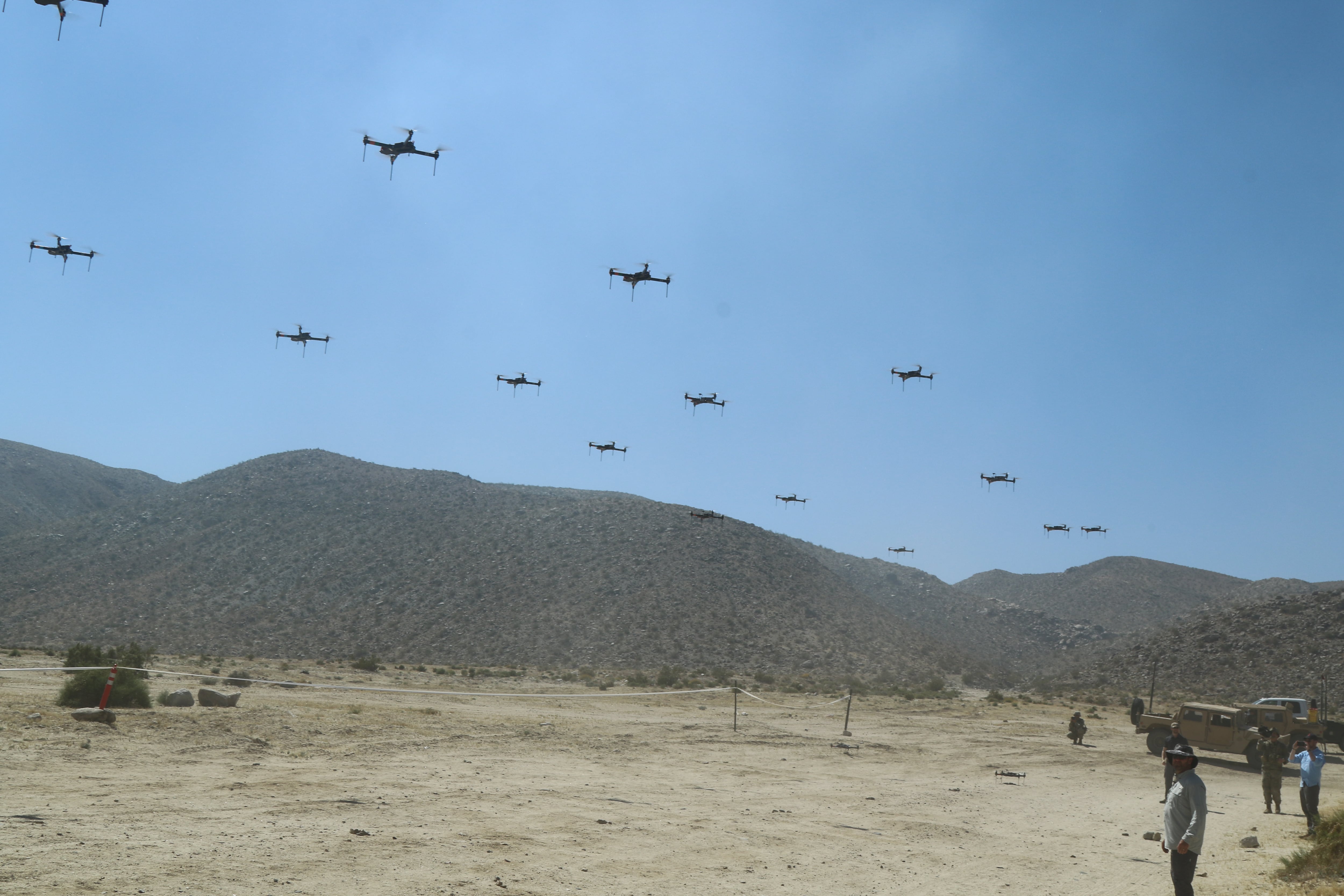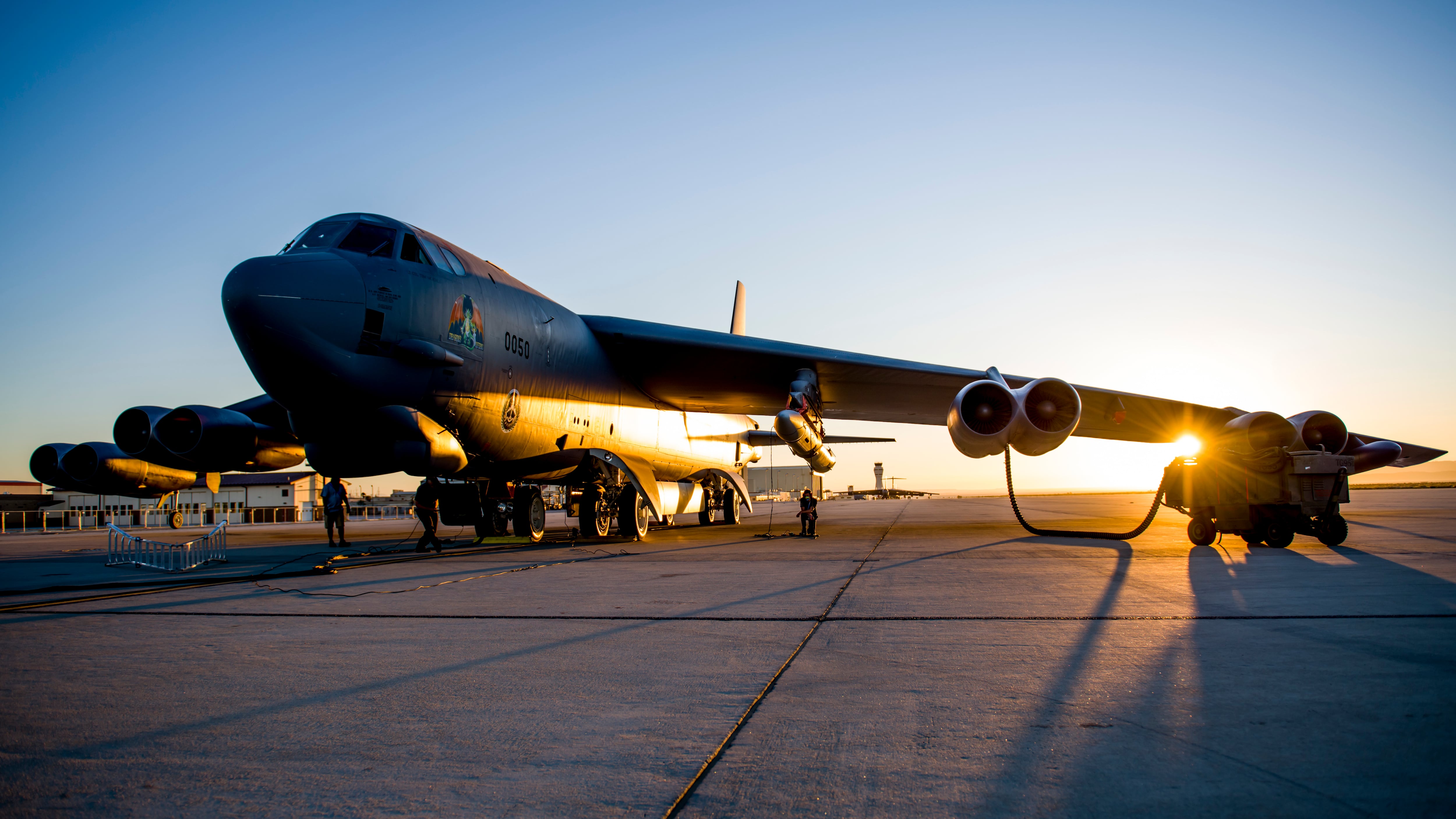The Army continues to integrate electronic warfare capabilities within a variety of operations, with the most recent example being its use in counter-drone operations during the Maneuver Fires Integrated Experiment, or MFIX, at Fort Sill, Oklahoma, from April 3-13.
The event sought to evaluate a variety of emerging technologies and concepts. The main reason for experimentation is to learn, mitigate risk and deliver the right capabilities to soldiers in the field, said John Haithcock, director of the Fires Battle Lab at the Fires Center of Excellence, during a media telephone call on May 10. In order to determine the details of an experiment, he said, the lab studies the future operating environment.
He added that there are currently several emerging disruptive threats, especially in fires, unmanned aerial systems and air defense, and the Army ties this future environment to current capability gaps to determine what it needs to integrate into experimentation to study cross-domain fires.
Haithcock noted that soldiers experiment with EW tools for offensive means — particularly in short-range air defense and especially against commercially available UAVs — in a live-fire exercise in which participants downed actual drones being flown at them by an opposing force.
Aside from the various laser capabilities that were tested against UASs, Haithcock described other systems such as the anti-UAV defense system, or AUDS, which is an electronic warfare system that can be mounted onto a ground vehicle platform to disrupt a UAS.
Haithcock also explained that soldiers conduct electronic attacks to disrupt UAVs as well as locate common ground stations, a tactic now widely practiced, which not only goes after the aerial threat but the command and control piece and even the operators themselves.
Despite the advanced EW capabilities exercised against the opposing force in MFIX, which included flying 14 different types of air platforms to test short-range air defense capabilities, Haithcock acknowledged the blue force, or friendlies, did not play in a cyber- and EW-contested environment.
"We did not play a red team, [or opposition], that had EW or cyber capabilities," he said. "Now we played EW on our side, obviously because that was one of the tools we used to disrupt the UAVs, but we did not play that from an enemy side."
The military has been criticized in the pastfor the way it trains in optimal conditions. "I think big lessons that we learned in Afghanistan and Iraq was that of course our platforms and systems performed differently in different environments," said Liz Miranda, director of the Integrated Logistics Support Center at the Army’s Communications-Electronics Command, in a recent interview. She noted that while in the past, the Army would train soldiers in sunny, optimal conditions, when "we put them in a different environment and the system is not responding to their needs, there was panic."
Now, she said, the Army is taking the solider and the equipment to the environment where it believes soldiers are going to be fighting, to include contested environments.
Systems that performed well and mature at MFIX will be nominated to head the Joint Warfighting Assessment, formerly the Army Warfighting Assessment, a large-scale exercise to be held in Europe next year.
An Army Training and Doctrine Command spokesman told C4ISRNET that TRADOC’s intent is to provide a contested cyber and EW environment for the Joint Warfighting Assessment, but the command is still working through the details to determine what is possible.
Importantly, the MFIX exercise incorporated the electronic warfare planning and management tool, a command and control planning capability that allows commanders and soldiers to visualize and thus plan out what electronic warfare effectswill look like in the field if employed via a graphical user interface.
The first of four Electronic Warfare Planning and Management Tool capability drops was fielded to Fort Bliss, Texas, in September, which provides a visual of what can be jammed, what is being jammed, what is emitting, what the enemy emitter looks like, what it might look like to plan around the enemy’s emitting and to plan jamming the enemy to allow for physical maneuver in the terrain. The other three capability drops include spectrum management and cyber situational awareness through a follow-on capability called Cyber and Electromagnetic Battle Management that will give commanders more options — exploiting cyber vulnerabilities of sensors in the field as opposed to jamming — from which to choose.
Following the media call, Michael Spears, fires experimentation specialist at the Fires Center of Excellence, told C4ISRNET in an email that a 290A EW technician was at the brigade tactical operations center where the Electronic Warfare Planning and Management Tool was hosted and used to plan electronic attack effects, and is there to explain the electromagnetic spectrum environment to the commander.
A 29E30 EW noncommissioned officer was in the maneuver battalion tactical operations center but did not have an Electronic Warfare Planning and Management Tool, Spears said.
Haithcock said MFIX was set up for a brigade-combat-team-and-below scenario. The Army is working to stand up a new electronic warfare detachment, and it re-billetedits EW personnel to 17 series, which is cyber.
Separately, the Army is testing how to integrate cyber and electronic warfarepersonnel into traditional brigades, figuring out what capabilities are needed and how they will factor into a maneuver element.
The Army divested much of its EW capabilities, given the fight in which it has been engaged for the last 16 years. "Now we’re finding that those capabilities did not go away on our threat — enemy, adversaries — at the near-peer level," saidMaj. Gen. Bo Dyess, acting director of the Army Capabilities Integration Center at TRADOC.
Now the Army’s Rapid Capabilities Office is prioritizing delivering an EW capability to Europe given the immediate need in the face of Russia’s capabilities in this space.
"It was very clear that the strategic gap was the ability for NATO and the American participation in NATO to be able to do ground maneuver in an electronic warfare environment," saidDoug Wiltsie, director of the Army’s Rapid Capabilities Office. "What we have focused on is being able to field a capability that will allow the maneuver forces … the ability to do ground maneuver in a contested environment."
Mark Pomerleau is a reporter for C4ISRNET, covering information warfare and cyberspace.
